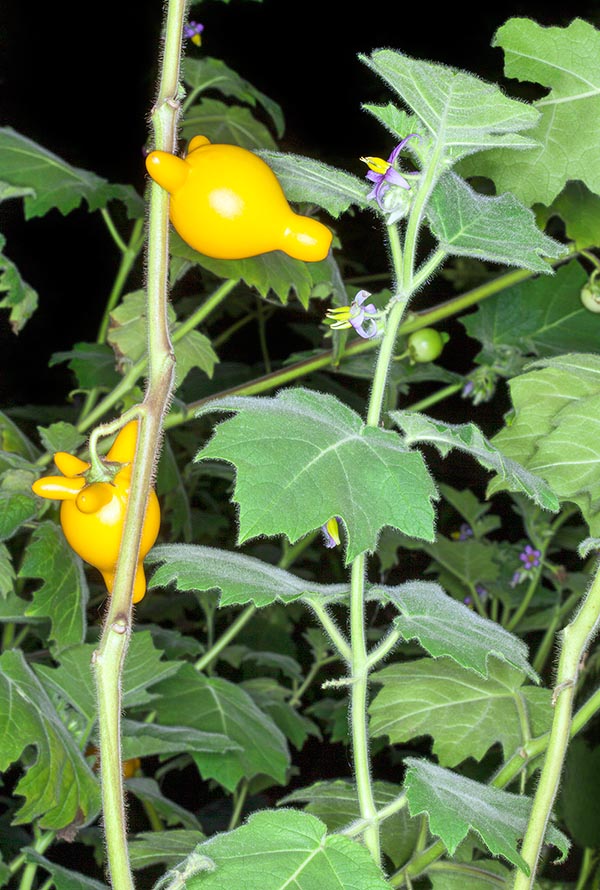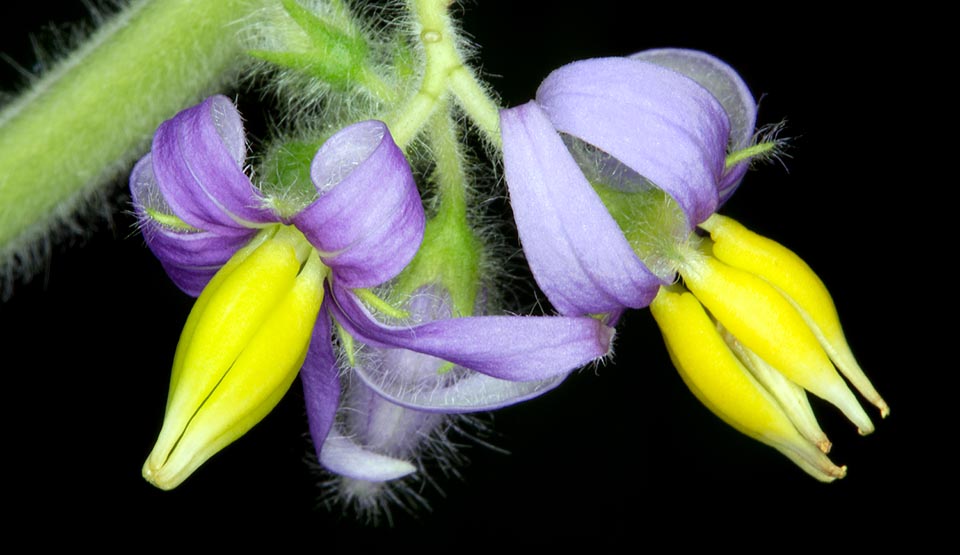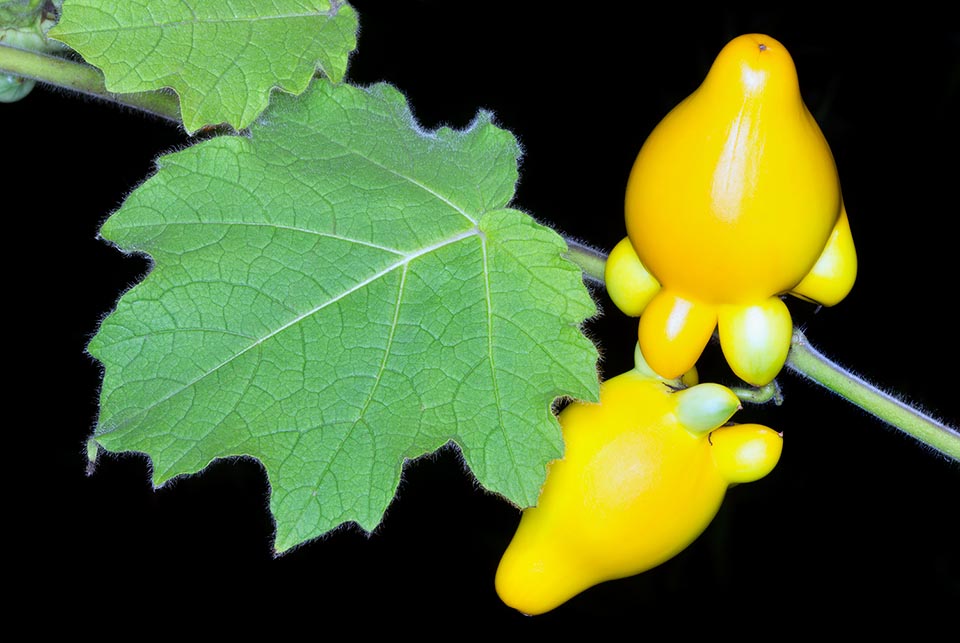Family : Solanaceae

Text © Pietro Puccio

English translation by Mario Beltramini

The Solanum mammosum is a herbaceous or shrubby species, annual or perennial with short life, native to tropical America. It can reach, with ramifications, even 150 cm of height © Giuseppe Mazza
The name of the genus comes from the Latin “solamen, -minis” = relief, comfort, due to the medical and narcotic properties of some species; the specific name is the Latin adjective “mammosus, a, um” = which has large breasts, with reference to the shape of the fruit.
Common names: apple of Sodom, cow’s udder, dog poison, fox face, love apple, macawbush, Mikey Mouse plant nipplefruit, pig’s-ears, tit plant, titty fruit, turkei berry, zombie fruit (English); tetilla, vaca vaquita (Bolivia); cabeça de cabrito, jua bravo, jurubeba do pará, peito de moça (Brazil); ru qie, wu dai tong tang (China); hoja de luna, lulo de perro (Colombia); pichichio (Costa Rica); chucho muyo, teta de vaca (Ecuador); morelle mammée, poire de bachelier, pomme d’amour, pomme teton (France); Euter-Nachtschatten (Germany); chicha, tetereta (Guatemala); tete jeune fille (Haiti); terung susu (Indonesia); pianta dei capezzoli (Italy); terung balanda, terun susu (Malaysia); berenjena (Mexico); cocona venenosea (Peru); pecho de doncella (Puerto Rico); berenjena de cucarachas, berenjena de gallina, berenjena de teta (Spain); tuna (Venezuela).
The Solanum mammosum L. (1753) is a herbaceous or annual shrubby or perennial with short life species, erect, ramified, 1-1,5 m tall, with brown or purple stems and branches provided of glandular hairs and yellowish spines, straight or slightly curved, 0,4-1,5 cm long.
The leaves, on a 3-8 cm long spiny petiole, are simple, ovate-triangular with irregular sinuate-lobate margins, truncate to cordate base and acute or obtuse apex, 6-25 cm long and 5-20 cm broad, pubescent and provided of needle-like 0,8-2 cm long spines along the main veins.
Lateral racemose inflorescences, subsessile, bearing 3-6 flowers, on a 0,5-1 cm long pedicel, with pubescent campanulate calyx, more or less provided of spines, with 5 ovate-lanceolate lobes with pointed apex, 0,3-0,5 cm long , 5 oblong-lanceolate petals, about 2 cm long and 0,4 cm broad, villous externally, of violaceous colour, 5 stamens with yellow anthers, 0,8-1 cm long and a 0,3 cm long style.
The fruit, poisonous, is a pyriform berry with 1-5 protuberances ovoid at the base, initially of pale green colour, then bright yellow when ripe tending with the time to orange yellow, 4-10 cm long and of 3-5 cm of diameter, white spongy mesocarp and numerous lenticular seeds, about 0,4 cm long and 0,3 cm broad, of glossy dark brown colour.

The lateral racemose inflorescences with 3-6 violaceous flowers and showy yellow anthers. Amply cultivated as ornamental, can naturalize and behave as infester © Giuseppe Mazza
Despite its poisonousness for the mammals it is amply cultivated as ornamental, due to the odd fruits long lasting on the plant, besides for the medicinal virtues attributed, in the tropical, subtropical and marginally in the milder temperate-warm climate countries, often naturalizing and behaving as infestant. Elsewhere, it is utilized as annual sowing in an environment protected in winter and transferring the young plants in open ground in spring. It requires full sun and adapts to a vast variety of soils, also strongly clayey, it stands long dry periods as well as water stagnations for short times, but prefers the constantly humid draining soils.

The very decorative fruit, auspicious in China and used in floral compositions, is a poisonous pyriform berry up to 10 cm long with 1-5 protuberances ovoid at the base. Initially pale green, gets bright yellow when ripe and then orange yellow. Insecticide with medicinal virtues, facilitates also the capture of the fishes by stunning them © Giuseppe Mazza
Synonyms: Solanum platanifolium Hook. (1826); Solanum globiferum Dunal (1852); Solanum mammosissimum Ram. Goyena (1911).
→ To appreciate the biodiversity within the SOLANACEAE family please click here.
